This week we set to work performing differential photometry (as outlined in previous posts) using python, as opposed to AIJ. Our python photometry allows us easier access to the data and is more automated than using AIJ, meaning we can more easily standardize our procedure. I then made a periodigram from our Ha fluxes in our Taurus field.
Python Photometry
Our pipeline runs aperture photometry for all the stars it can detect in our images, cross checks them with the coordinates of the stars we input as targets, collects the most stable (not varying) stars to use as comparisons, and then performs differential photometry. Using the differential photometry from our Taurus targets I constructed comparison figures that show both the H-alpha and Ha-off light curves.
I ran into some trouble with the close binary stars in our Taurus field, because neither AIJ nor the python photometry played nicely with their blended point-spread-functions. For now I’ve skipped out on those targets, since we have a suite of single star targets to investigate.
Photometry of our TESS field proved more difficult, with many targets disappearing due to their low signal-to-noise ratio throughout the observing run. These targets are also frustrating to work with because they don’t have distinct names or a history in the literature like the Taurus targets. I’ve made three comparison figures for three randomly selected M-dwarfs in the field to show for now, while we continue to work. In the following light curves, notice the reduced cadence which is due to nightly stacking of the observations to improve target SNR.
Interestingly, we can see Ha excess in these M-dwarfs also, even given the reduced cadence and low SNR; these targets are also more obviously oscillating more sinusoidally; this implies these dwarfs are rotating and undergoing atmospheric activity.
Periodigrams
Using a Lomb-Scargle periodigram we learned to construct last week, I found the best fit periods and phase shifted the Ha lightcurves for our Taurus field objects. The results of that are in the gallery below. I got quite a few goofups when trying to do the same with our Ha-off data, which I will try to troubleshoot the next time I meet with our instructor. An example of that is also shown below.
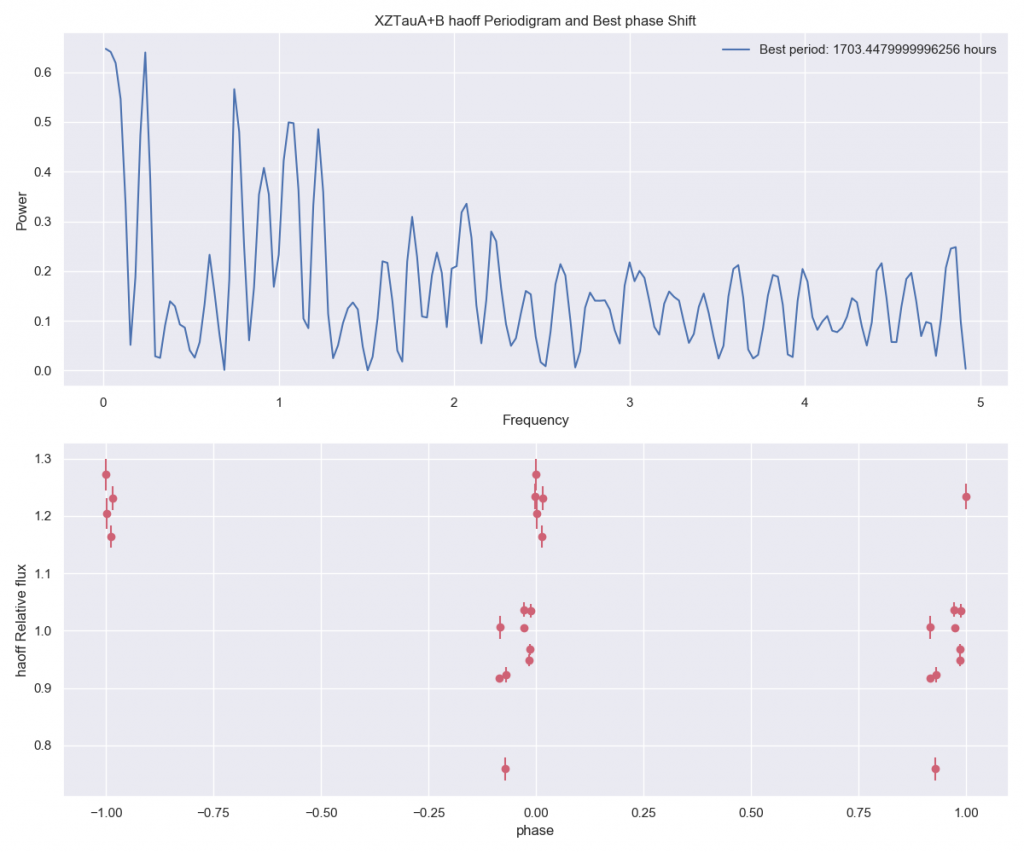
Looking forward
This week our group hopes to put together a poster outline and start working on a target information table for our TESS field targets. This will require some consultation with our instructors as to how we should move forward with both the TESS field non-detection troubles and our funky Ha-off periodigrams. Until then, stay healthy, and clear skies!



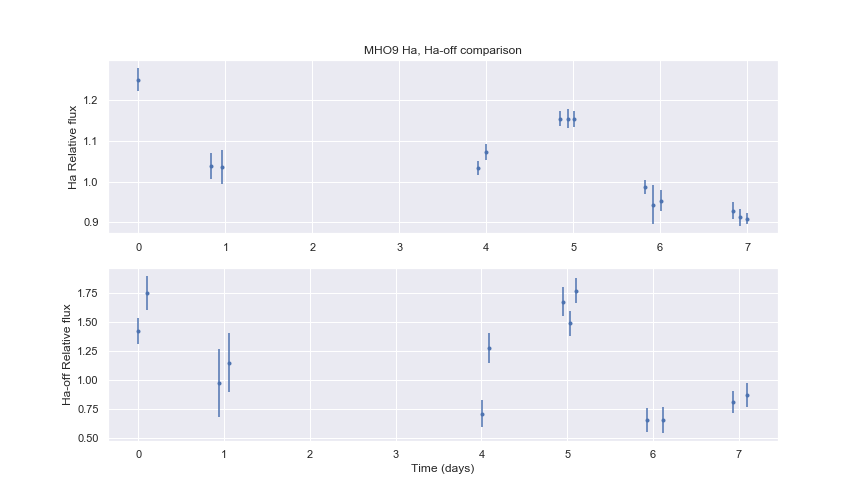







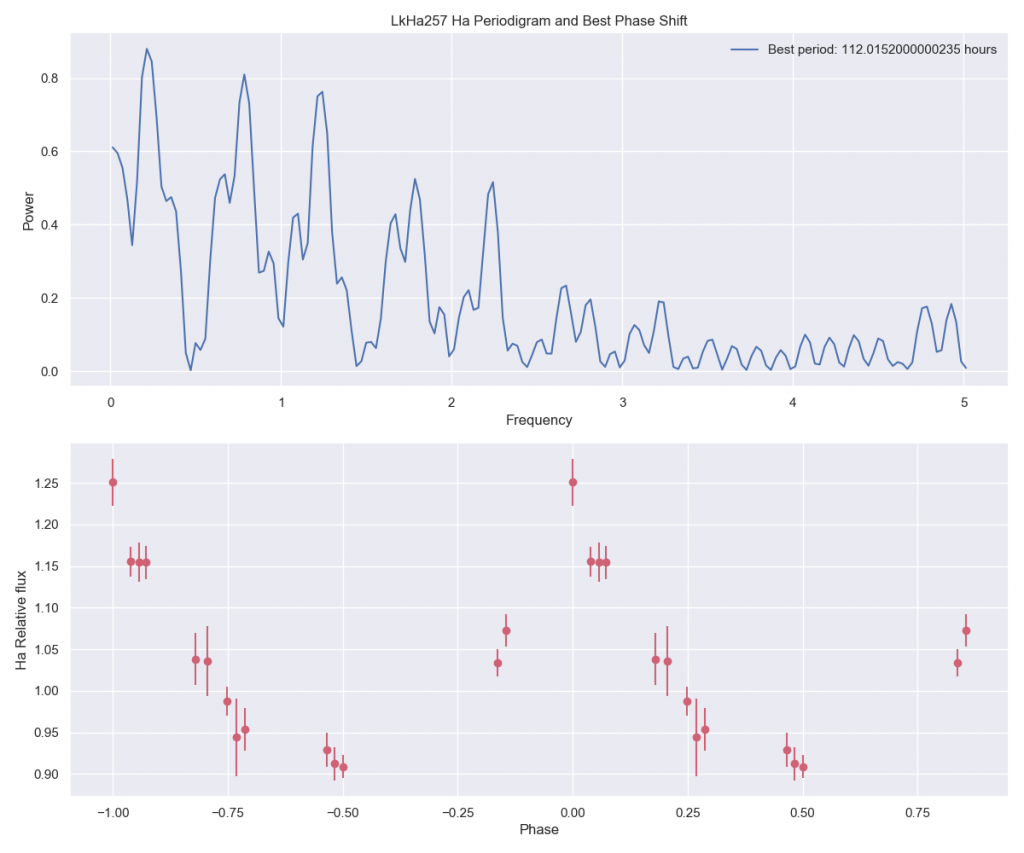

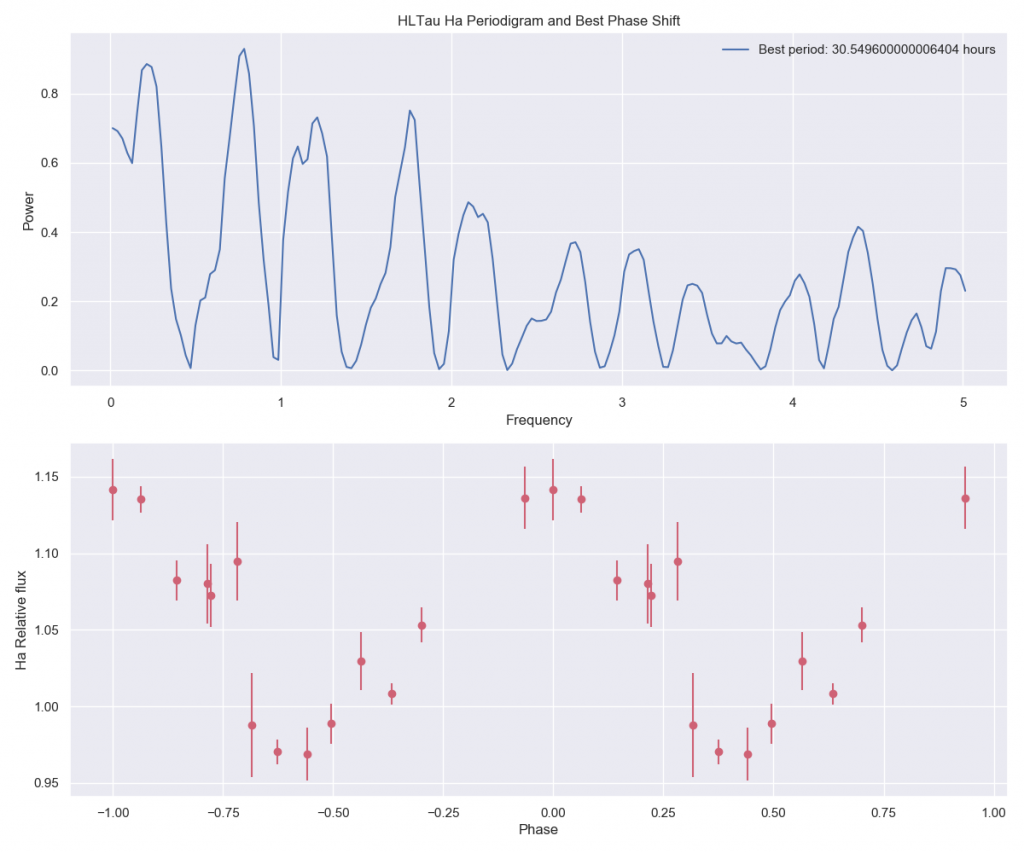

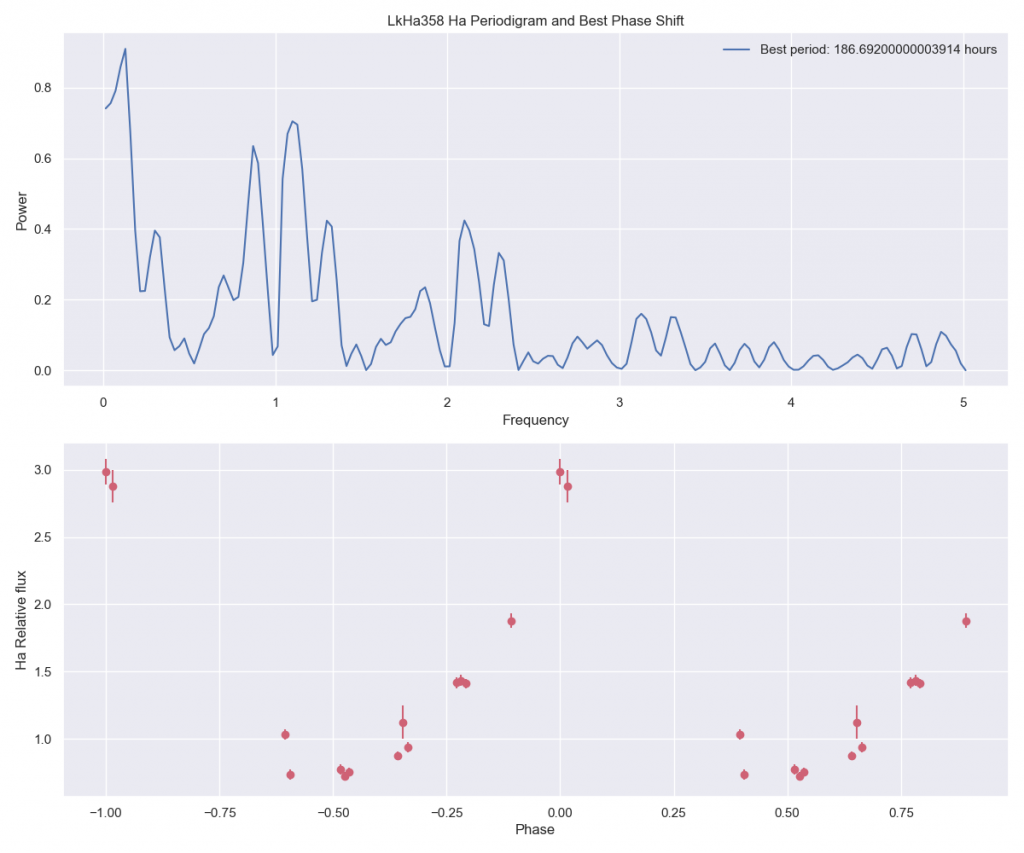

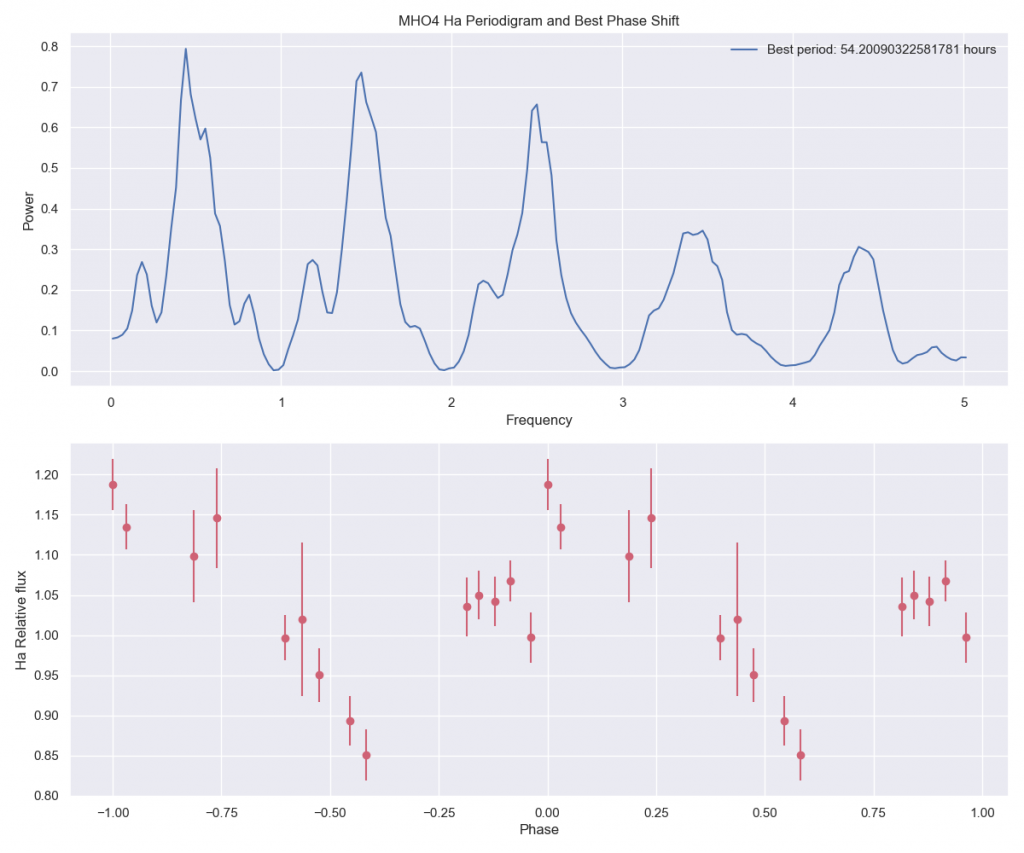
Leave a Reply